What to do if a loved one chokes, faints, or is injured? How to perform chest compressions and artificial respiration? Doctor tells
Emergencies may never happen in your life, but they may lie in wait for you around the nearest corner. In this case, it is very important to know the rules of first aid and be able to use them. These rules are quite simple, but they can literally save someone's life. The only thing is, in a panic or in a hurry, it is important not to make common mistakes. How to provide first aid correctly in the most dangerous life situations? Says the head of the All-Ukrainian Union of Paramedics Yaroslav Vus.
State 1. The person choked on food or a foreign body
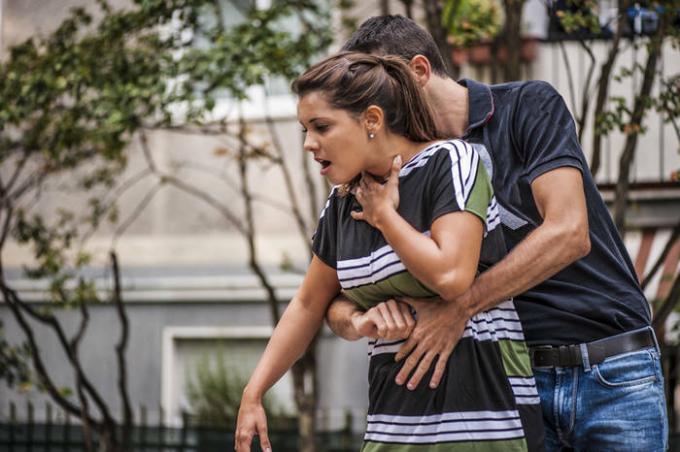
If a person chokes, the Heimlich trick will help / istockphoto.com
The moment a person chokes, there is a partial or complete blockage of the airways. Partial, as a rule, is not dangerous: most often a person manages to clear his throat. But from complete obstruction, death can occur in a matter of minutes. How to distinguish between these conditions: if a person can answer your question about his health, the obstruction is partial. If the person is silent and clutches his throat, the obstruction is complete.
What not to do in this situation: Don't pound the sitting person on the back. When the choked one coughs, the foreign body rises up, and he tries to spit it out. And at the moment of a blow on the back, the foreign body again falls down, and attempts to spit it out end in failure. It makes no sense to drink water in this case. It goes straight into the esophagus, and we choke in the trachea. Also, raising your hands up will not help.
If the obstruction is partial, the person is coughing, and you want to help him, it is enough to tilt him face down so that the force of gravity helps to cough up the foreign body.
What to do, if the obstruction is completeand the person cannot breathe. First of all, you need to tilt him face down to knee level and start hitting hard on the shoulder blades. In this case, the blows should not be "tapping", but "knocking out" a foreign body: that is, the movement of the hand during the impact should be directed towards the throat. You need to hit very hard. It is enough to hit 5 times.
If after that the foreign body does not fly out, we urgently conduct Heimlich's reception. To do this, raise the person vertically and place the right fist about 2 cm above the navel. With our left hand we tightly grasp the right fist and spread our elbows. Be sure to move your head to the side at the same time, because during this technique, the head the victim will lean back with force and can, at best, bruise you, and at worst, knock out everything teeth.
With maximum force, we press with our hands, but not directly to the back, but slightly up, towards our chin. While the person is conscious, we alternate 5 blows and 5 Heimlich tricks until he coughs up and spits out a foreign body. If it was not possible to clear his throat and the person lost consciousness, we call an ambulance.
State 2. The person is bleeding
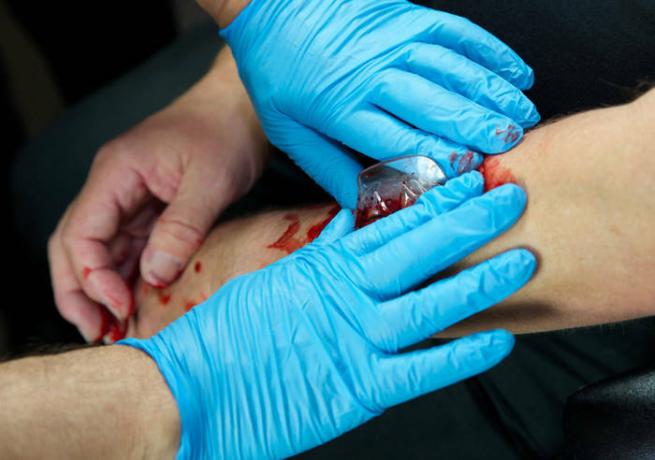
Bleeding is stopped with the palm or fist / istockphoto.com
Bleeding is different - arterial, venous, capillary. But you have to remember one thing: it will not work to make a full-fledged tourniquet from improvised means (from an elastic band, belt or piece of fabric). The tourniquet must be a tourniquet. If it is not at hand, we stop the bleeding by direct pressure on the wound. To do this, you need to put on a disposable glove on your hand (in emergency situations, a regular plastic bag will do), find the hole where the blood comes from, and press right there with your fist or palm. This will give you the opportunity to support the patient until the ambulance arrives.
State 3. The person has seizures
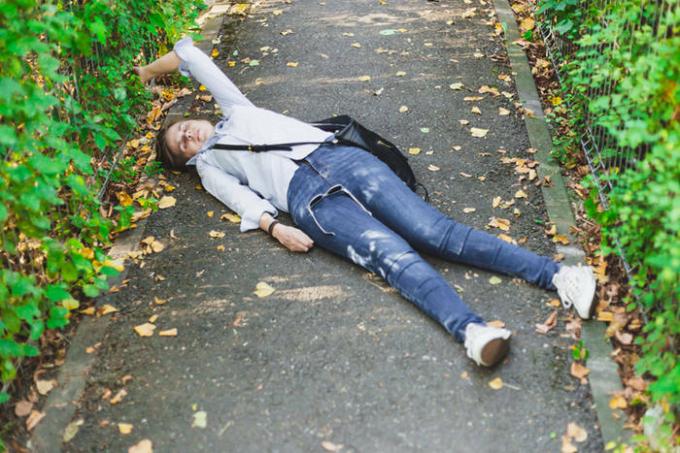
During seizures, you need to protect the person as much as possible / istockphoto.com
People often call seizures epilepsy, but they are not. Epilepsy is a disease and seizures are a symptom of it. At the same time, seizures may not always be associated with epilepsy. For example, in children, they can be a reaction to a high temperature. In adults, the cause of seizures can be head trauma, cancer, and toxic poisoning.
So there is a man who has been seized by convulsions. What is customary to do in this case? Urgently insert a spoon into the mouth, while knocking out all the teeth of the person. Remember that during seizures, the tongue does not sink, because all the muscles in the body (including the tongue) are in a spasmodic state. It can fall down when the seizures are over, because at this moment the person is usually unconscious. Only in this situation does the relaxed tongue really descend and can block the airways.
All of your help with seizures - to do it so that the person does not injure himself. Place something soft under the head, remove glasses, free the patient from excess clothing and call an ambulance. When the cramps are over, turn him over on his side and monitor his condition until the doctors arrive.
State 4. The person has a loss of consciousness
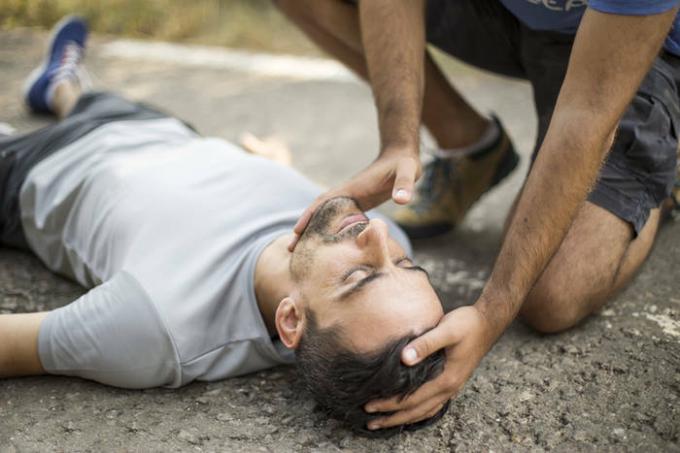
Check for breathing during fainting / istockphoto.com
If a person is lying on the street, and you still do not understand what happened to him, approach him from the side of the head and ask him how he feels. At the same time, before checking a person's consciousness, it is very important to make sure that there is nothing around that could pose a danger to you. Relatively speaking, a brick will not fall on your head and the state of the person who lies in front of you will not lead you.
So, we ask the person about his health. If there is no answer, we tap on the shoulders, but not on the face. You can rub it with your fist behind the ear - this helps to bring a person to consciousness. If the victim shows no signs of life, his breathing should be checked. To do this, we tilt our head with our ear to his face, carefully look at the chest and count down 10 seconds.
If there is breathing and the chest rises, we turn the person on its side facing us. It is highly desirable that in this position the patient's legs are above the head. There is no need to forcefully "seat" a person unconscious: in this case, the outflow of blood from the brain only intensifies. We call an ambulance and monitor the condition of the victim before the arrival of the doctors.
State 5. Loss of consciousness with respiratory arrest
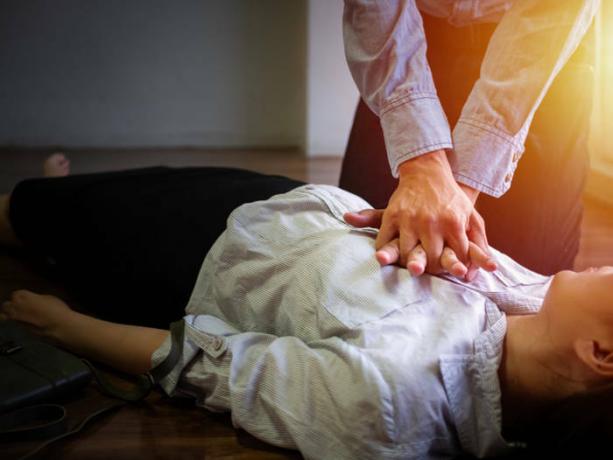
Indirect cardiac massage removes people from clinical death / istockphoto.com
You found an unconscious person, checked his breathing and found that he was not. This means that the person is in a state of clinical death and cardiopulmonary resuscitation should be started immediately. It consists in the fact that we will press on the chest (indirect heart massage), and then do artificial respiration. You will need to make 30 clicks, then 2 exhalations, and then follow this algorithm.
Before doing cardiopulmonary resuscitation, you need to find the point where the heart is. Please note that the heart is not on the left, but strictly in the center of the chest. To determine the height at which it is located, find the collarbone and the point where the ribs end. Estimate the distance between these two points and determine its midpoint. This will be the location of the heart.
One hand is placed at this point with the base of the palm, and the other is placed on top of it. In this case, the second hand should be clasped with the first fingers. If there is no hold, the upper arm will inevitably slip, and you injure it.
You should be completely above the patient during the massage. That is, he needs to be placed on the floor or on the ground so that you can straighten your arms directly above his chest. In this position, we make 30 maximum strong and deep clicks at a speed of 2 times per second.
After that, you need to give a person artificial respiration (2 breaths). For this, it is very important to use a film-valve: this device is sold in any pharmacy and costs several hryvnias. It consists of a film (which means you will not lick a stranger) and a valve that blocks the movement of air in your direction. That is, the victim during regaining consciousness will not exhale a possible infection into your mouth. We insert the film-valve into the person's mouth, throw back his head, close his nose with our fingers. We open our mouth as wide as possible and make two deep exhalations. After that, we continue the indirect heart massage.
If you do not have a film valve at hand, and you do not know the victim, artificial respiration is not performed in this case. Before the ambulance arrives, we do only chest compressions.
You will also be interested to read:
First aid in nature: bruises, bites, wounds, burns
Invasion of snakes in Ukraine: first aid for a snake bite




